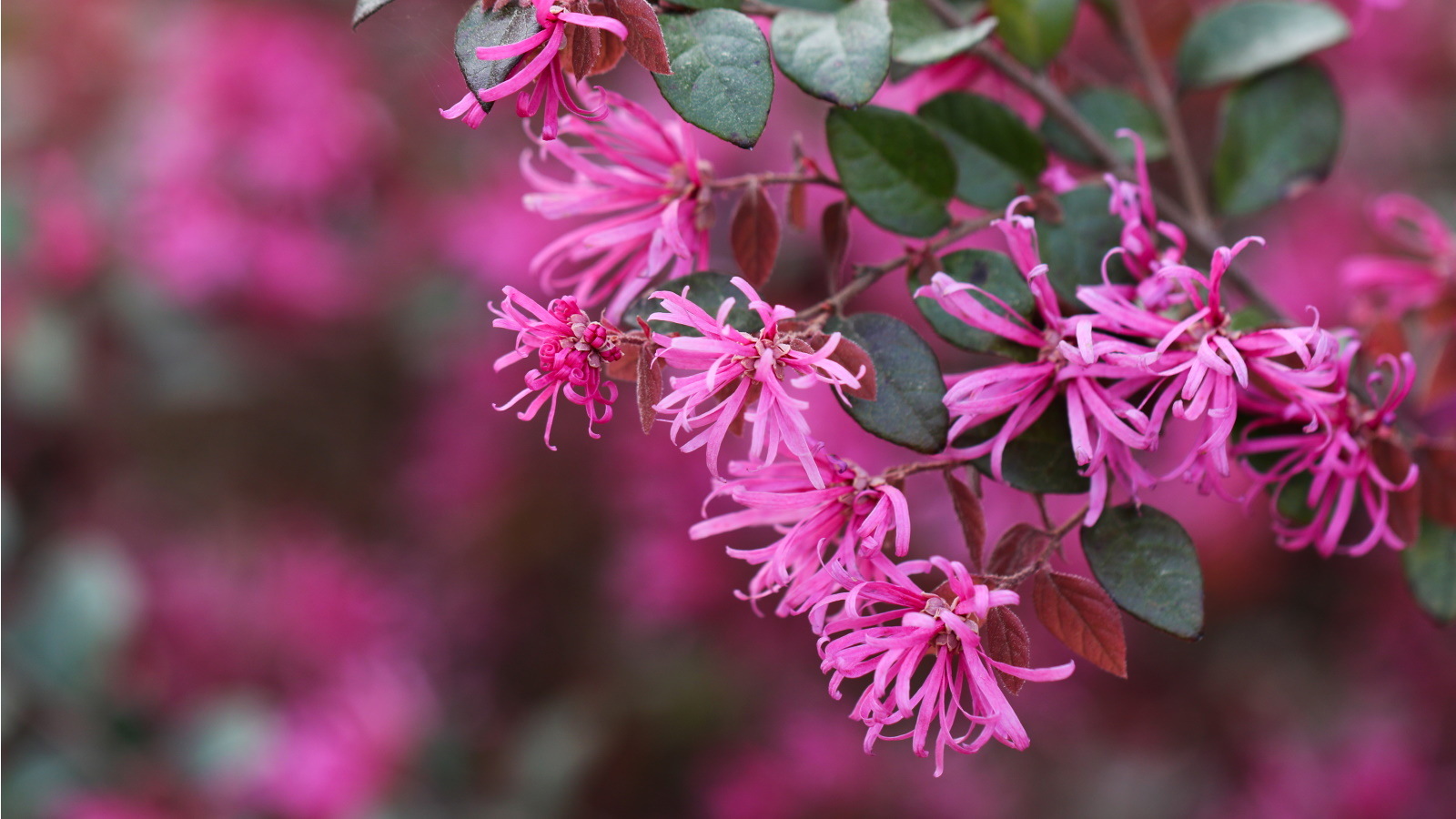
As those glorious summer blooms fade away and vibrant fall leaves arrive on the scene, it's time to start thinking about the quieter, colder months in our backyards. There are some beautiful flowering shrubs that can lift the spirits during this time of year by bringing pops of unexpected color to the landscape.
If you're looking to create a more eye-catching winter garden – this year and beyond – planting these shrubs now as part of your fall gardening checklist is a good idea. This allows them to establish their roots before the ground freezes. Just remember to check that they are well-suited to your particular region's conditions and US hardiness zone to ensure their success.
We spoke to horticultural experts to find out some of the best shrubs for winter flowers, to add that burst of life to the yard when everything else is dormant.
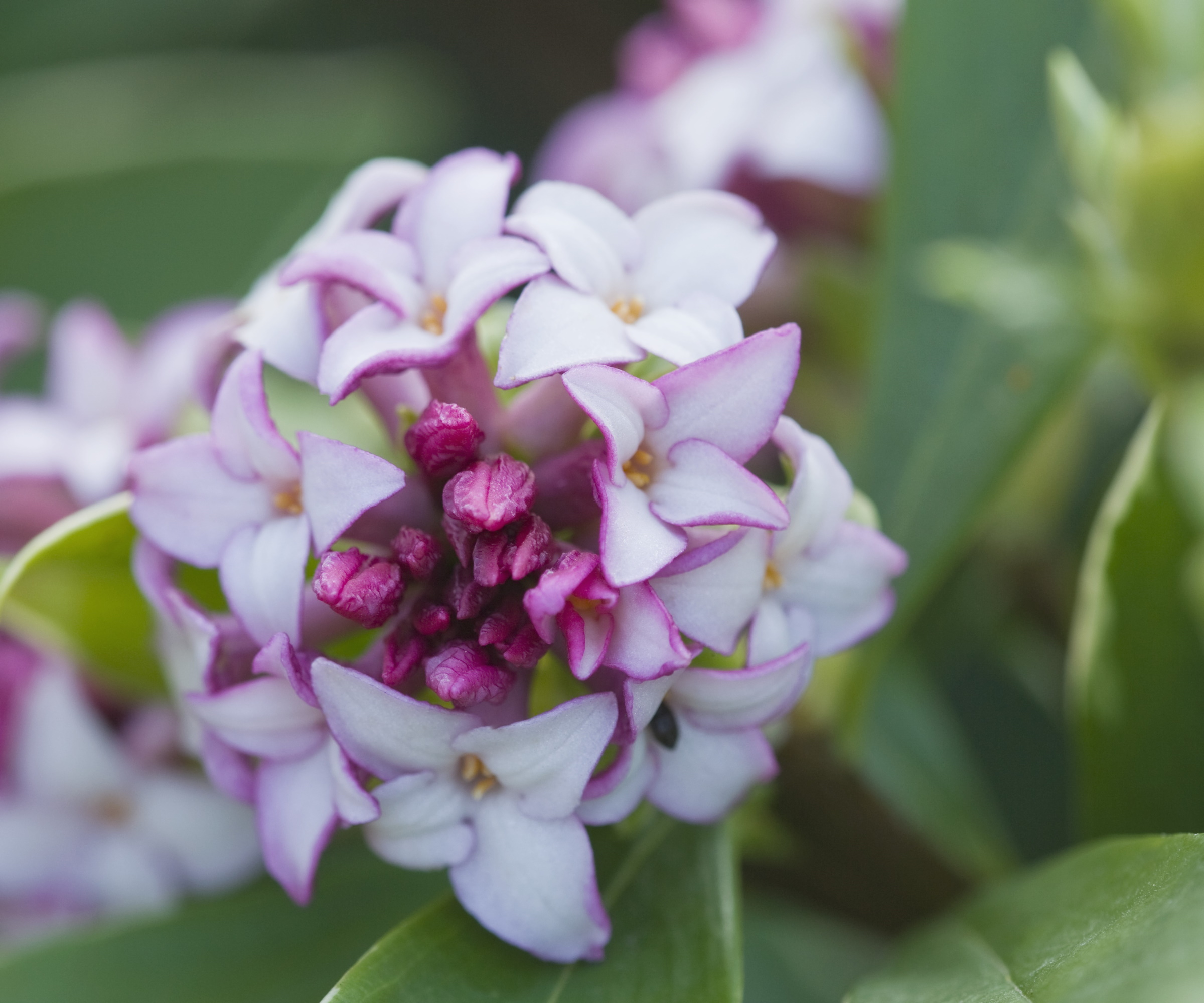
12 winter-flowering shrubs to plant in fall
Soil preparation, watering, and care are of course essential for plants' health and longevity. If you plant your shrubs properly and look after them well, you'll be rewarded with a winter display year after year. Consider these 10 shrubs to plant now for the upcoming winter season.
1. Forsythia
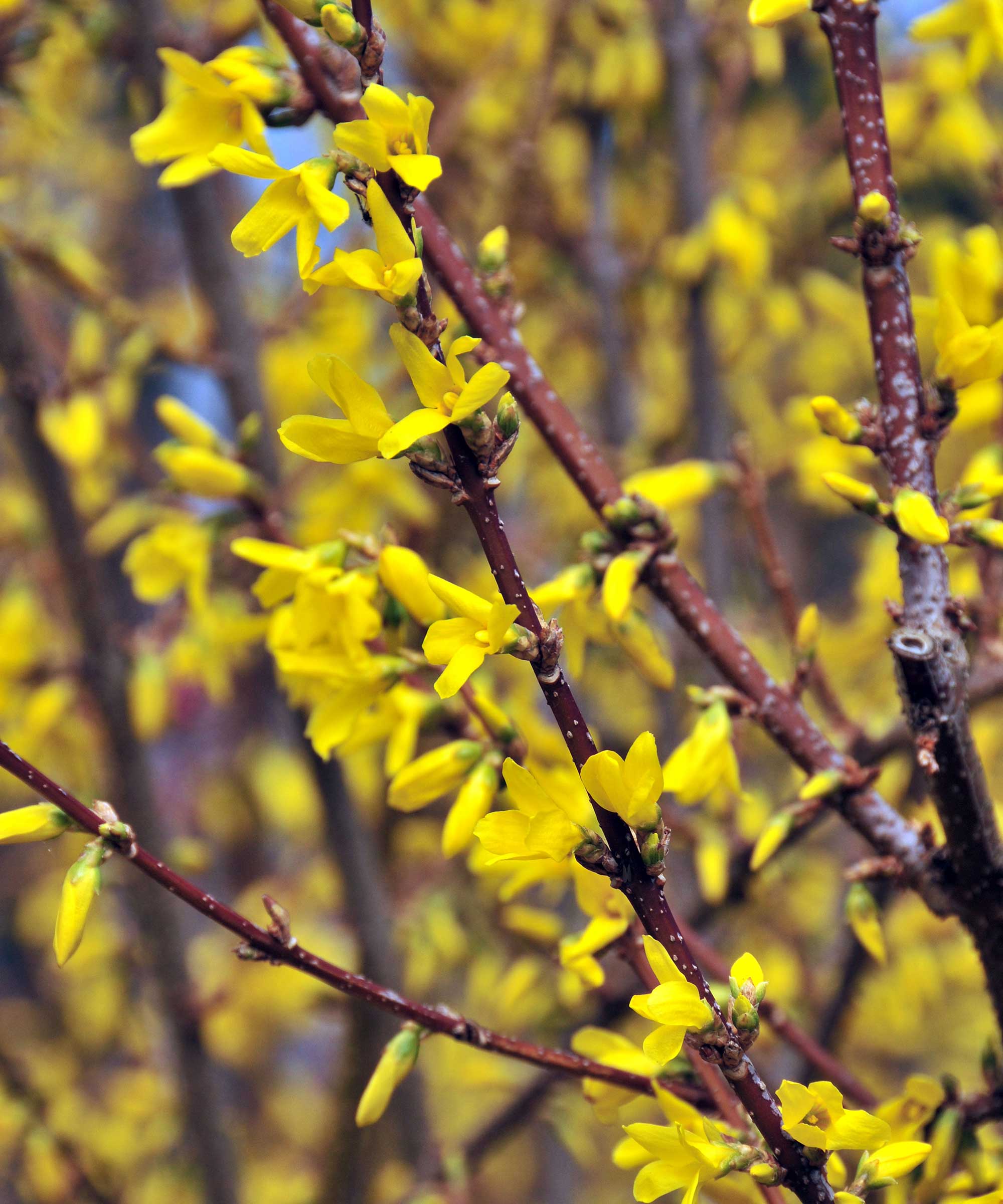
- Height: 2-10ft
- Width: 3-10ft
- Hardiness: USDA 4-8
- Best for: Bright yellow flowers
Forsythia is known for its vibrant yellow flowers that appear in late winter or early spring. It's a surefire way to brighten the garden during the months when there's not much else to admire.
It's an easy-care, fast-growing shrub, with various-sized cultivars available to suit all types of spaces. Forsythia x 'Meadowlark', available from Nature Hills, for instance, grows to around 10ft tall, making an effective privacy hedge. For something smaller, try forsythia 'Courtasol', also from Nature Hills – an attractive container plant.
'Planting them is straightforward as long as there is no frost,' says Felicity Nicole, gardening and wellness expert. 'Don’t forget to pair them with a dogwood or another colorful tree or shrub nearby. This will create a beautiful contrast in your garden,' she adds. Felicity also suggests clipping forsythia to use for indoor winter décor.
Grow forsythia somewhere sunny for the best blooming display.
2. Loropetalum
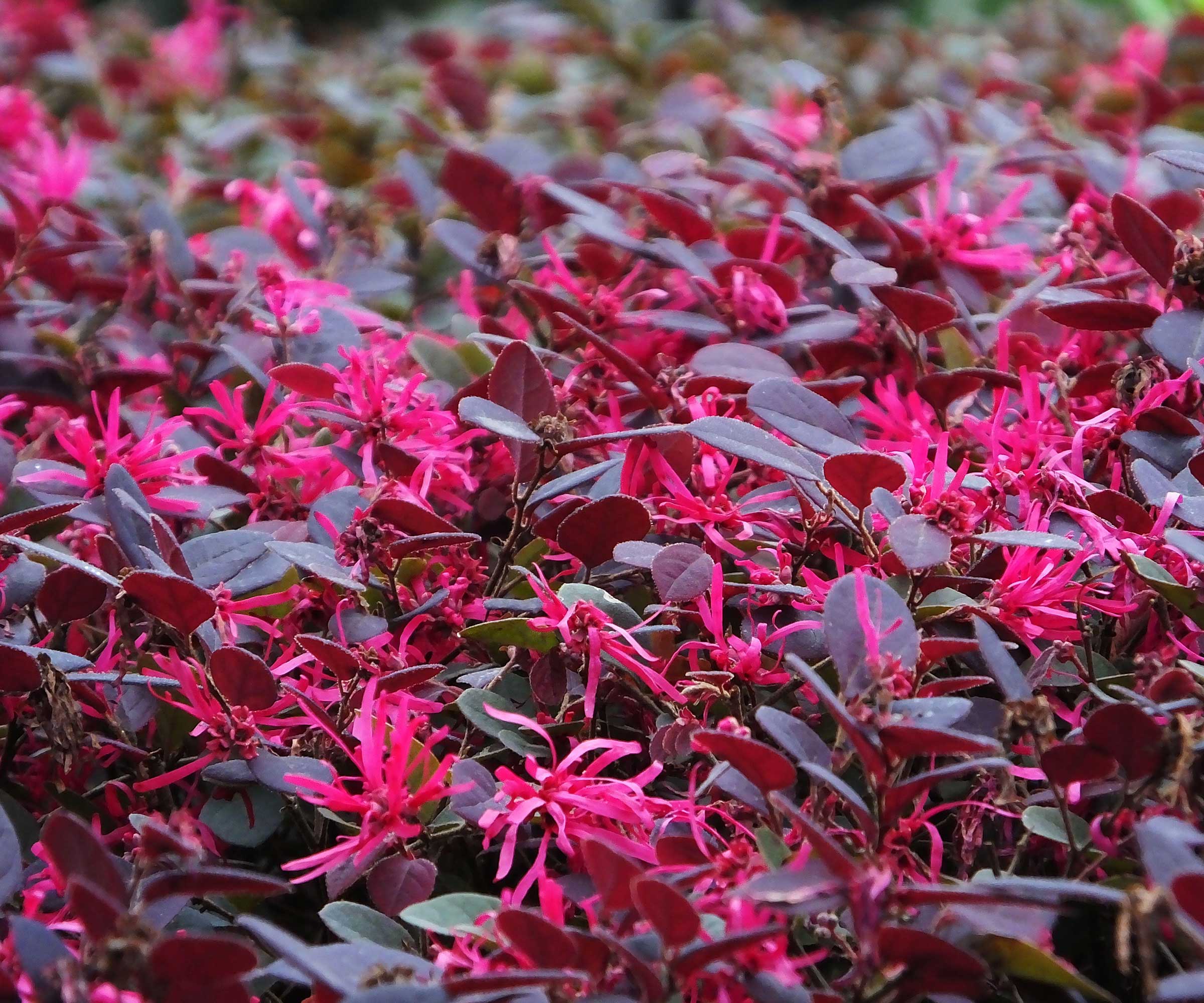
- Height: 1-15ft
- Width: 3-6ft
- Hardiness: USDA 7-9
- Best for: Evergreen beauty
Loropetalum shrubs have colorful foliage and produce small, spiky flowers in shades of pink or white. They are well-suited to warmer regions, such as California.
Also known as Chinese fringe flower, these shrubs are compact or large, depending on the cultivar. They are evergreen, and drought-tolerant once established. Plant them in full sun or partial shade and slightly acidic, well-draining soil for the best results.
Crimson Fire Loropetalum Shrub, from Fast Growing Trees, is a particularly attractive variety due to its variegated leaves.
3. Witch hazel
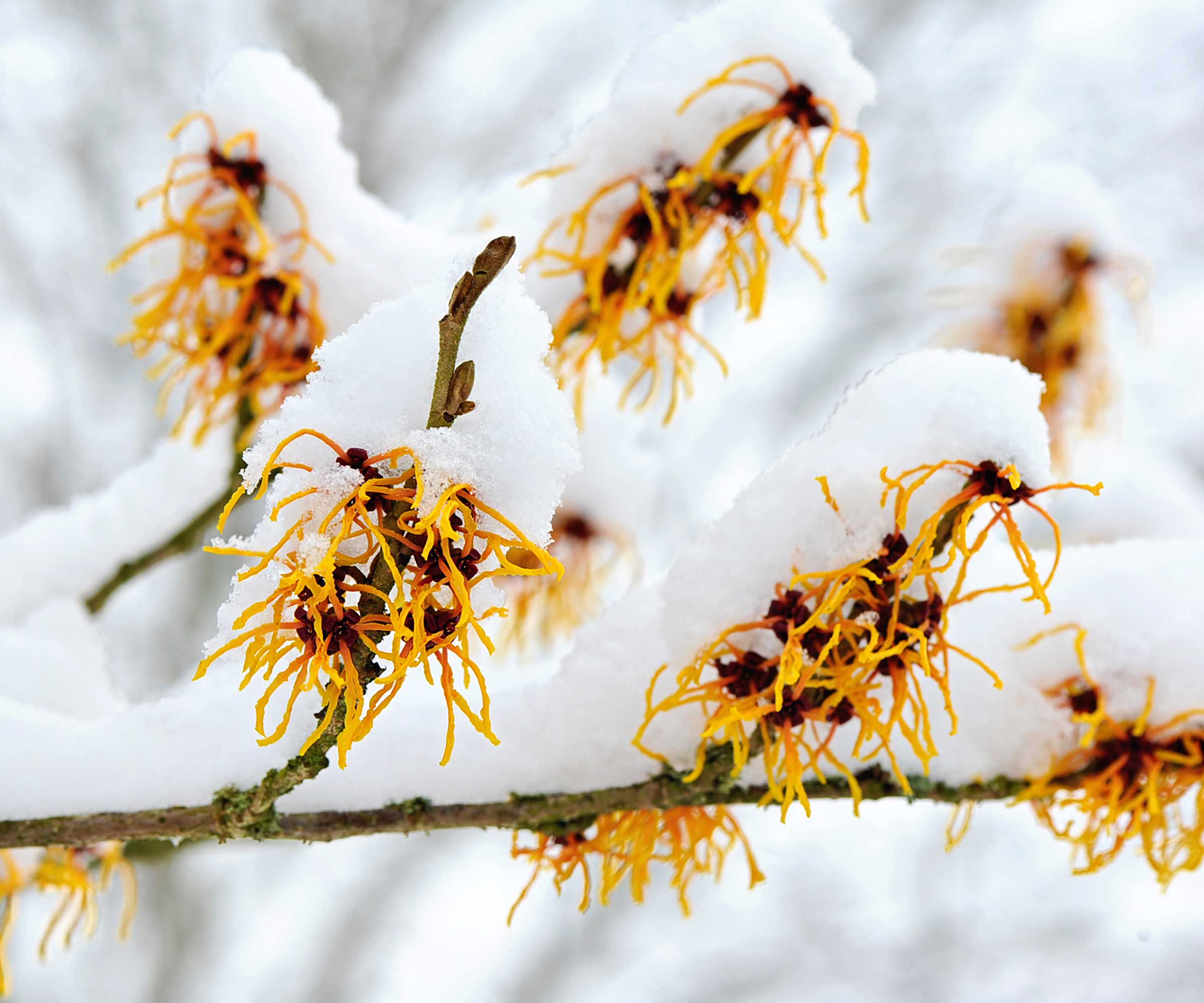
- Height: 6-20ft
- Width: 8-20ft
- Hardiness: USDA 4-8
- Best for: Easy-care color
A list of winter-flowering shrubs wouldn't be complete without witch hazel, recommended by Lindsey Chastain, the owner of The Waddle and Cluck blog.
Their flowers have strappy petals in tones of coppery red or yellow, and a pleasing scent. American Witch-Hazel, available at Walmart, is striking with its graceful yellow blooms that fade to red in the winter.
They tolerate partial shade to full sun and are low maintenance, says Lindsey. 'Prune witch hazel in spring after flowering.'
4. Oleaster
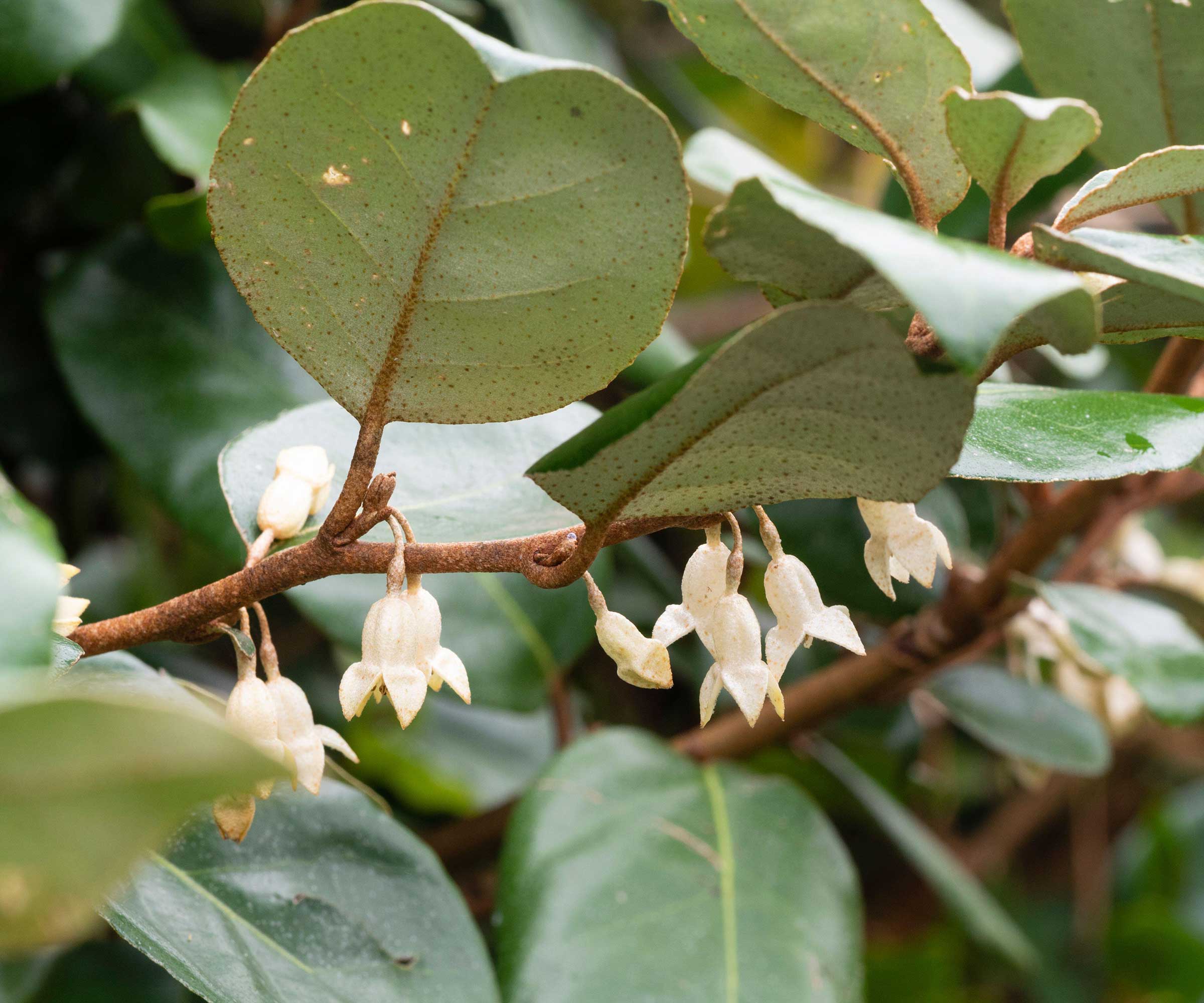
- Height: 8-10ft
- Width: 8-10ft
- Hardiness: USDA 7-9
- Best for: Hedging plant
Elaeagnus x ebbingei, commonly referred to as oleaster, is an evergreen hedging plant with silvery-green leaves.
Opt for 'Gilt Edge' for its attractive variegation. It has tiny white flowers throughout fall and winter which fill the air with fruity sweetness.
These fast-growing shrubs offer multi-seasonal interest to the garden, as in spring, oleasters produce vivid orange berries. They are very easy to look after and adapt to many environments (including coastal backyards), but won't tolerate soil that's overly wet.
5. Winter jasmine
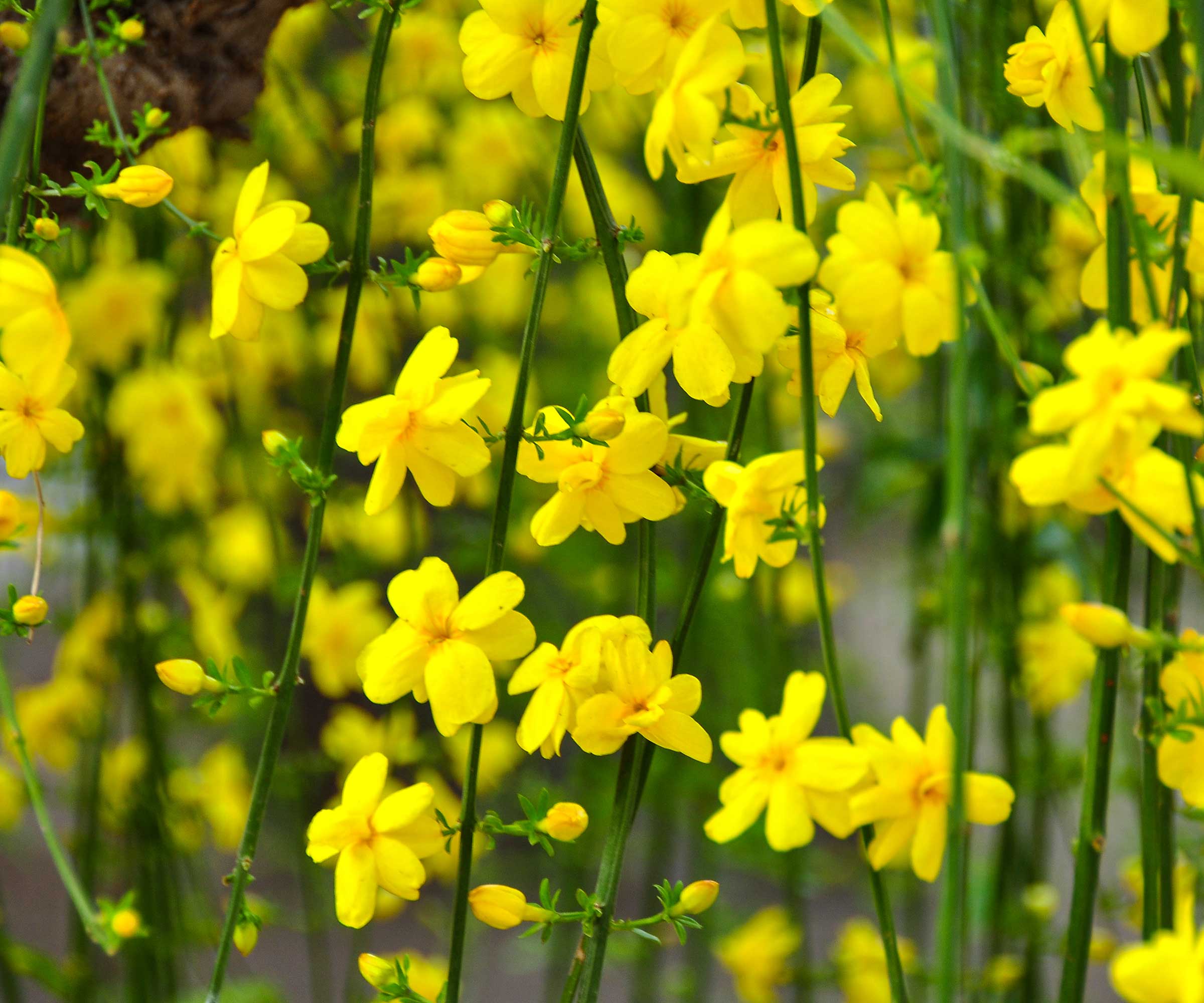
- Height: 4-15ft
- Width: 3-6ft
- Hardiness: USDA 6-10
- Best for: Climbing vines
Winter jasmine is a hardy, drought-tolerant shrub that produces bright yellow flowers in late winter. It's well-suited for sunny locations.
If you give it support, it will climb upwards with its vining stems, making it one of the best winter climbers. But, it also can be planted in pots or as a landscaping shrub.
'Winter jasmine is best grown as a ground cover or flowering vine and blooms from January through March,' says Felicity. 'Consider planting winter jasmine in a sunny location on a sloping garden, as it will cover and add great texture,' she adds.
Pruning should be done after it's finished flowering to control its size and shape, advises Lindsey.
6. Flowering quince
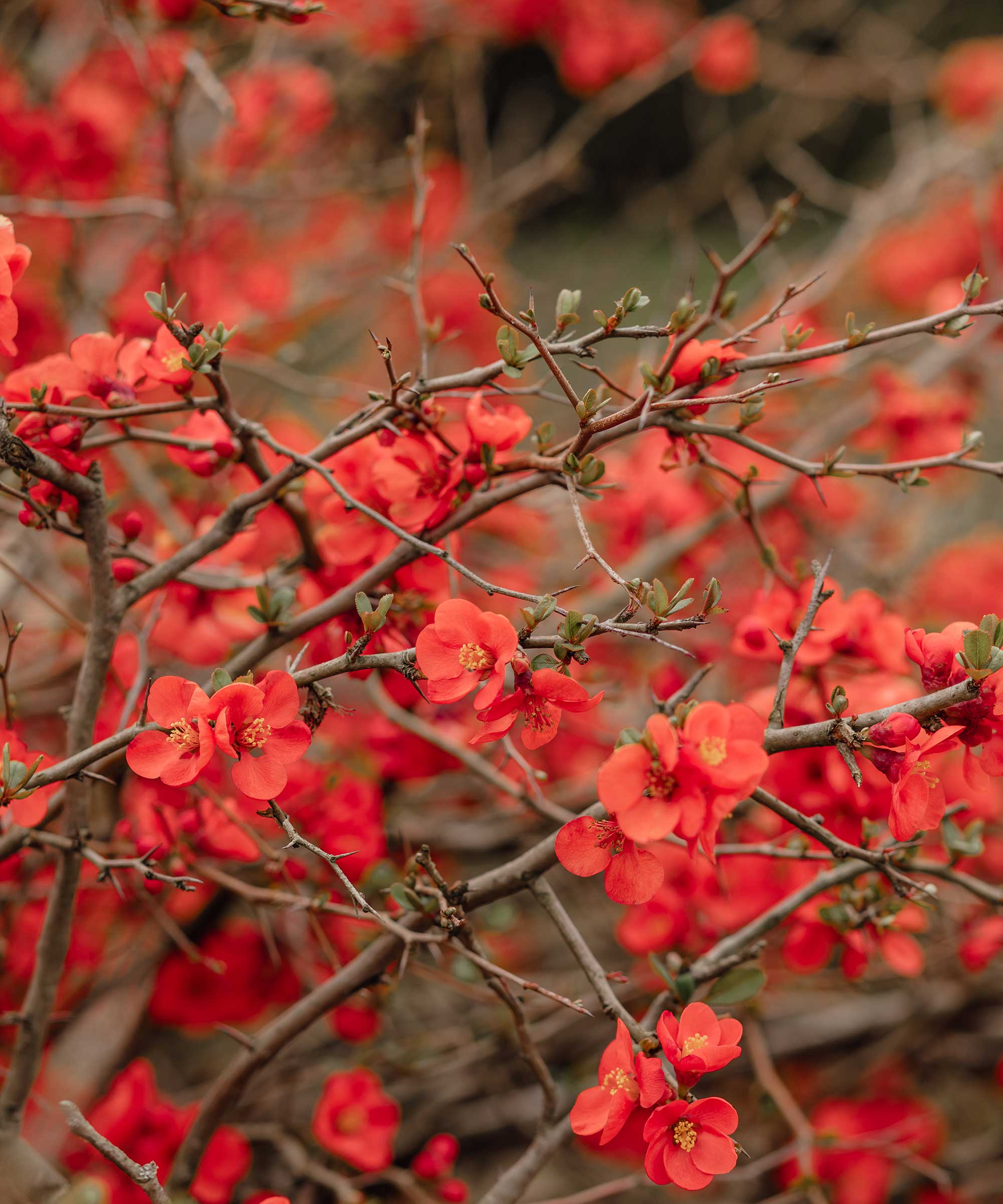
- Height: 3-10ft
- Width: 3-10ft
- Hardiness: USDA 4-8
- Best for: Cut flowers
Flowering quinces (Chaenomeles) are deciduous shrubs with spiny stems and eye-catching red flowers in late winter. They are often used as attractive, informal hedging plants. And, the cut stems can be used to brighten interiors during the colder months – they look gorgeous in a vase.
'The flowering quince can tolerate a frigid climate if planted correctly. It will produce a red, orangeish, and even pink blooms from January through spring,' says Felicity. 'The shrub likes the wild look, prefers the sun, has a proper pH of acidic to neutral, and can grow from three to 10 feet tall,' she adds.
Chaenomeles speciosa 'Scarlet Storm', from Nature Hills, is a particularly striking cultivar with double, crimson-red blooms. And, unlike the traditional varieties, it's thornless.
7. Mahonia
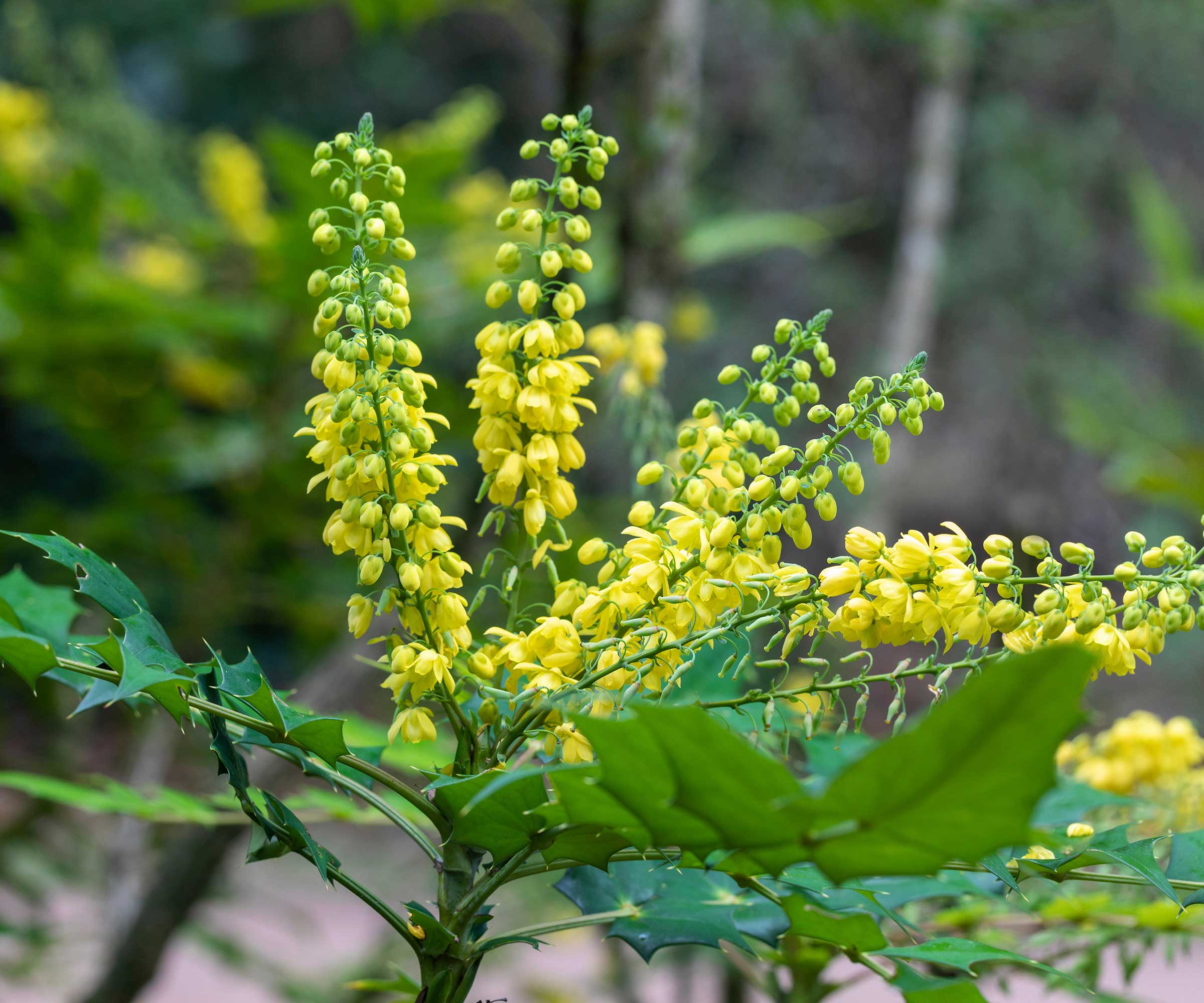
- Height: 1-8ft
- Width: 3-6ft
- Hardiness: USDA 5-9
- Best for: Large, easy-care shrubs
Mahonias are one of the best winter flowers. They're well-suited to both coastal and inland west coast regions, adding that they perform well in the shade. They offer clusters of vibrant, yellow flowers with a delicate, lily-of-the-valley-like scent and spiky, evergreen leaves.
'Mahonia prefers partial shade but will tolerate full sun. If you are in a colder climate zone, such as US hardiness zone five, I would recommend adding an extra layer of mulch around the base to prevent any winter damage,' says Felicity. 'Also, consider wrapping the shrub with burlap to protect it from harsh winter winds,' she adds.
Note that some varieties flower in spring or fall, so double-check before you buy if you're specifically looking for winter blooms. This Soft Caress Mahonia from Nature Hills offers bright blooms in fall and winter.
8. Camellia

- Height: 4-15ft
- Spread: 6-10ft
- Hardiness: USDA 7-10
- Best for: Large flowers
If you live somewhere with milder winters, you can enjoy the early and impressive blooms of some camellia cultivars.
There are many types of camellias to choose from but the 'Shishi Gashira' variety is a great choice for its glossy, dark green leaves and beautiful hot pink round flowers with a golden center that work well as cut flowers.
It's best to give these plants a full sun or partial shade position and consider making your soil more acidic if it has a higher pH level, so that your camellias can bloom happily and for longer.
Newly planted camellias also require regular watering until their root system is established, and you can retain moisture by mulching - try making a leaf mulch.
Camellia sasanqua 'Yuletide', from Nature Hills, is another winter-flowering option, offering bright red blooms with yellow centers.
9. Daphne
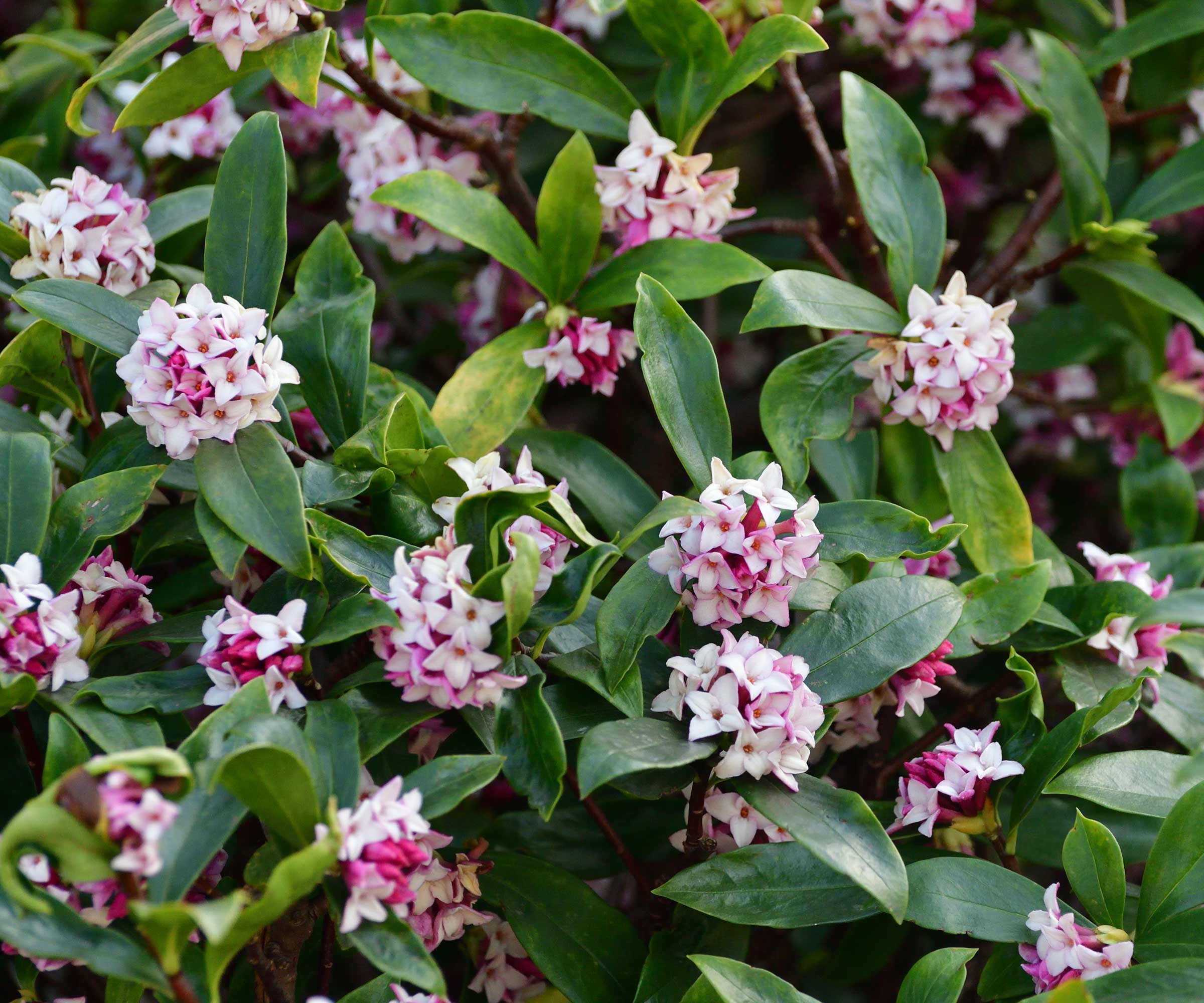
- Height: 3-4ft
- Width: 2-4ft
- Hardiness: USDA 4-9
- Best for: Intense fragrance
Daphne (Daphne spp.) is a winter-blooming shrub with a compact habit suitable for smaller yards, says Janet Loughrey of Garden Design. 'Intensely fragrant clusters of flowers that occur in late winter and early spring can perfume an entire yard on warmer sunny days.
'This broadleaf evergreen or deciduous shrub is deer-resistant, needs little pruning, and is virtually carefree once established,' she continues. 'Plant early in the fall to allow roots to establish and provide winter protection for first-year plants.' A sunny or partially-shaded site is best, with good drainage.
'Provide regular water during the first year of growth and mulch plants around the base to suppress weeds and retain moisture,' Janet adds. 'Apply a time-release all-purpose fertilizer in spring.'
10. Sweet box
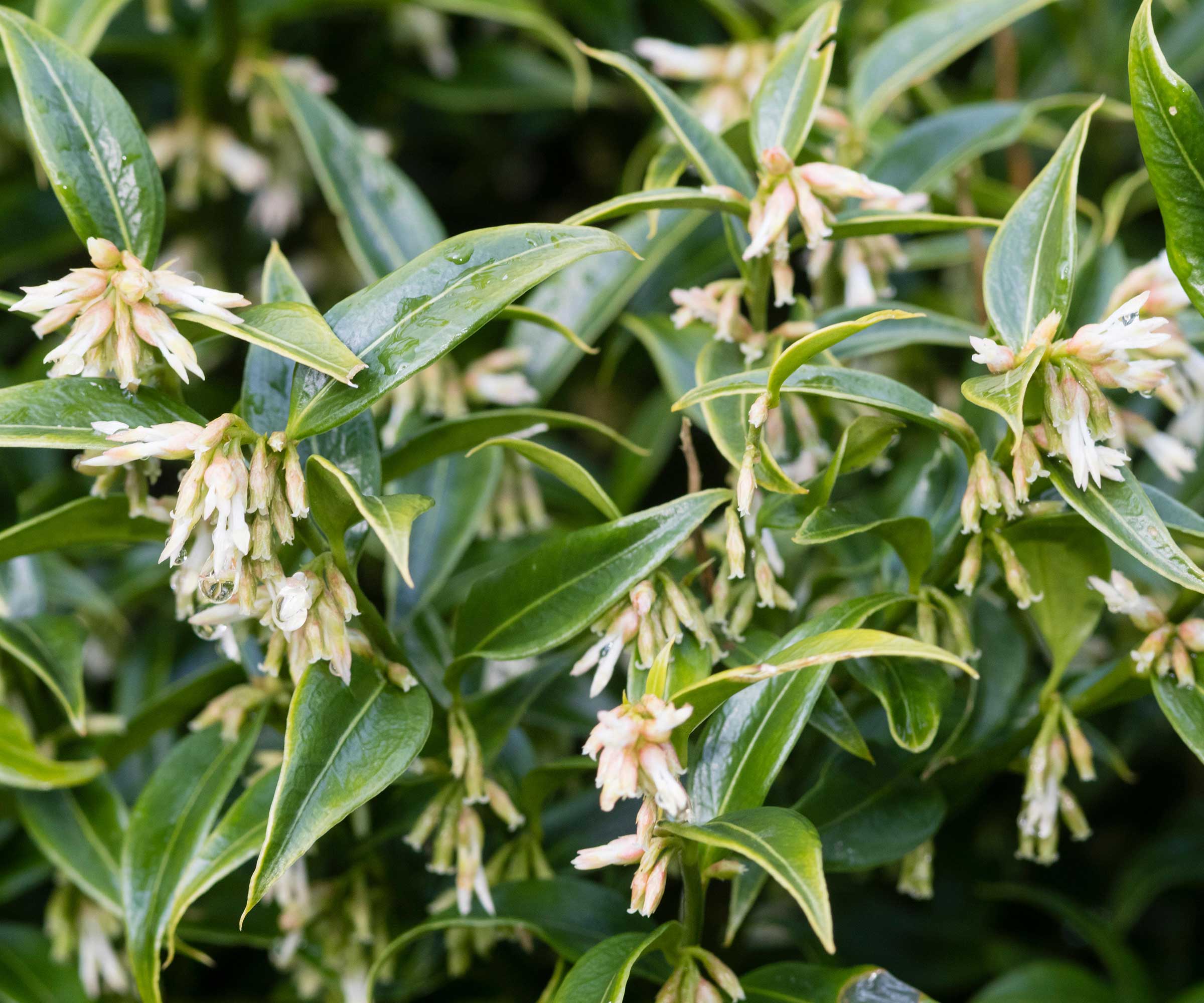
- Height: 2-5ft
- Width: 1-4ft
- Hardiness: USDA 6-9 (depending on variety)
- Best for: Shaded areas
Sarcococca, otherwise known as sweet box, is an evergreen shrub with delicate, creamy-white flowers in late winter that emit a pleasing smell. These are followed by berries.
Sarcococcas are happy in all soil types. The structure can be loam, clay, chalky or sandy and the pH can be alkali, acidic or neutral. Using loam-based ericaceous compost is absolutely fine, as would be using ordinary loam-based compost.
Popular species include S. confusa, S. hookeriania var.humilis (available at Nature Hills), S. orientalis, S. ruscifolia, and S. saligna. All are hardy apart from S. saligna, which needs protection in a cold garden. No regular pruning is needed apart from shortening frosted and dying shoots to live buds in late spring.
11. Edgeworthia
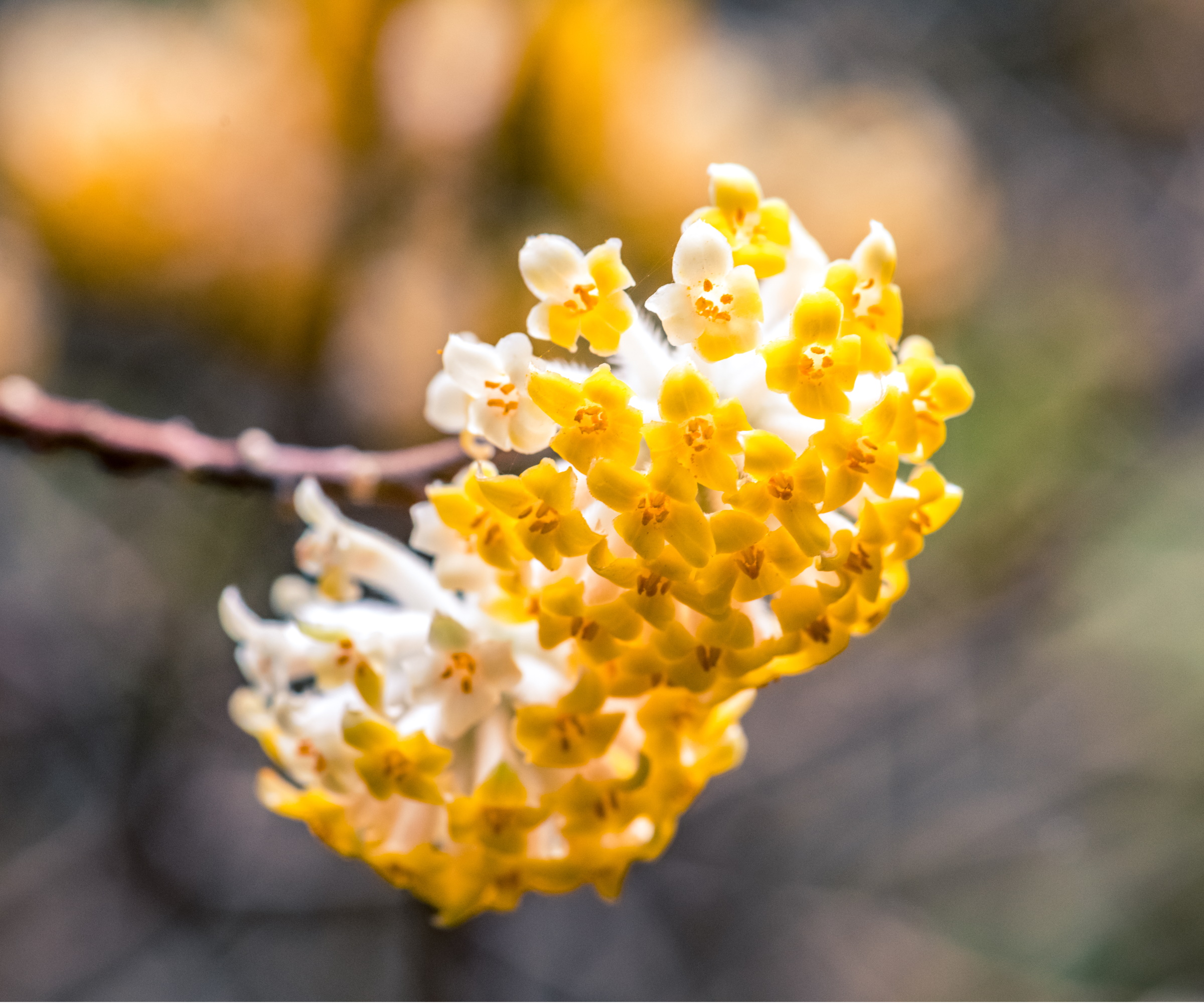
- Height: 3-6ft
- Width: 3-5ft
- Hardiness: USDA 7-9
- Best for: Cluster flowers
Edgeworthia, also known as paperbush, is a bright flowering shrub that blooms from late winter to spring. It produces clusters of yellow flowers on bare branches in winter.
'What makes this shrub unique is its flowering process. It needs space since the height can be as high as six feet tall, so a border wall would be beautiful in warmer climates,' says Felicity.
It's a hardy shrub, but does best in a sheltered spot. Its long blooming period also makes it one of the best spring flowering shrubs for early in the season.
12. Winter viburnum
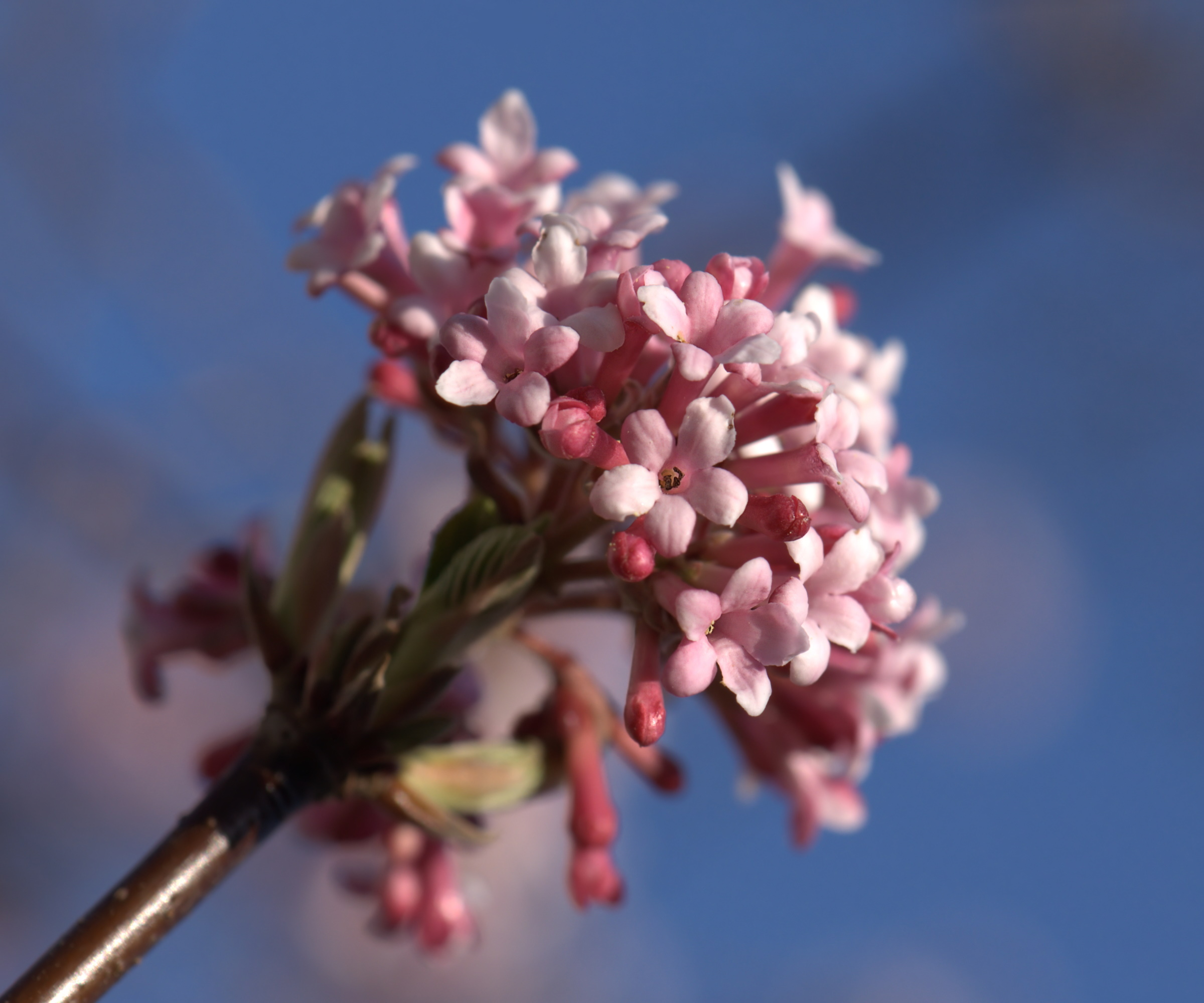
- Height: 4-6ft
- Width: 4-6ft
- Hardiness: USDA 4-8
- Best for: Winter flowers and berries
It's no secret that viburnums are a popular choice for spring and summer, but there are also viburnum varieties that bloom in winter. Not only this, they're also among the best shrubs with winter berries.
'Some might confuse this with the hydrangea or snowball bush since they are in the same family. What differs with the viburnum is that it can bloom in spring or summer and there are varieties such as 'Korean Spice' viburnum (available at Nature Hills) that will give you a beautiful flare of red during the autumn season,' says Felicity.
Top picks of viburnums that will offer winter blooms include Viburnum x bodnantense ‘Dawn,' as pictured above, and Viburnum tinus Spirit ('Anvi').
FAQs
When is it too late to plant winter-flowering shrubs?
It's best to plant your winter-flowering shrubs before the first frost in fall. Planting after frost can be difficult as the ground will be frozen and it could risk a lack of time for the roots to establish and become strong enough to get through harsher winter temperatures. The best thing to do is research when your local frosts will land and plan your fall planting accordingly.
When should you deadhead winter-flowering shrubs?
You should deadhead winter flowering shrubs when their blooms have faded. This is usually at the end of the winter season or even into early spring, depending on the variety you're growing. Removing spent flowers and cutting the shrubs back to healthy buds can help encourage new growth and ensure they bloom again in the next season.
It's key to plant your winter flowering shrubs now if you want them to develop robust roots and grow well through winter. This is true even if you're growing winter plants for pots as frost can affect them just the same. You can uplift your winter display further by accompanying your flowering shrubs with the best winter flowers for scent.







